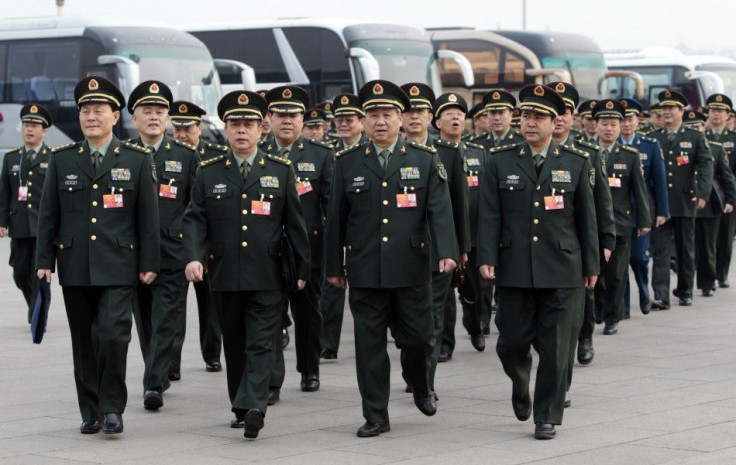China To Increase Military Spending To $148 Billion As US Makes Cuts

As most of the world’s biggest militaries scale back their budgets, China is planning on increasing theirs. The world's second-biggest economy may already have the largest military in terms of manpower, but technologically it lags the U.S.
According to defense consulting and analysis company IHS Jane's, this year China will be spending $148 billion on defense funding, up from $139.2 billion last year, spending more money on its military than any other country in the world except for one: the United States. Though the U.S. holds on tightly to the No. 1 position, budget cuts of $90 billion this year will bring the American defense budget down to $574.9 billion, so China is slowly closing in.
IHS also reported that by next year China is expected to spend more money on the military than Britain, Germany and France combined. By 2024, it will spend more than the entirety of Western Europe.
China has become acclimated with being a global economic and political influencer, but military prowess and defense technology have been somewhat of a last frontier. China’s central government, under President Xi Jinping and his predecessor Hu Jintao, have shifted an immense amount of money to military research. A tremendous effort has been made to let the Chinese and the rest of the world know that China’s military is to be taken seriously. In 2012, the PLA’s naval arm received its first aircraft carrier, a source of great pride for Chinese citizens. The year prior, in 2011, China introduced the prototypes of locally designed and manufactured aircraft with radar-evading capabilities.
However, all the money and shiny new equipment do not mean China is ready to fight. According to a report in The Diplomat, by Ian Easton, a military analyst with Project 2049 Institute based in Arlington, Va., China’s sheer numbers—in terms of manpower and budget—don’t necessarily translate into the People's Liberation Army's combat readiness: “The PLA, unlike the armed forces of the United States, Japan, South Korea, Taiwan and other regional heavyweights, is by definition not a professional fighting force.” Easton explains that realistic tactical training doesn’t occur in China, the way it does in other more established military forces, as a result of a government steeped in loyalty to protecting the Party rather than the citizens.
“Intense and realistic training is dangerous business, and the American maxim that the more you bleed during training, the less you bleed during combat doesn’t translate well in a Leninist military system.”
© Copyright IBTimes 2024. All rights reserved.






















